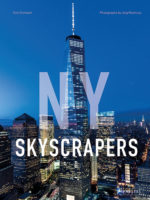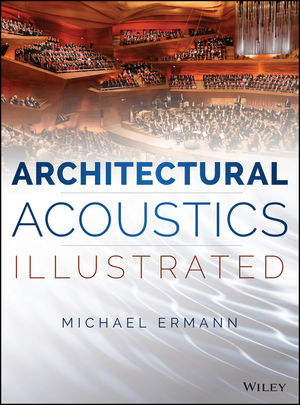30:30 Landscape Architecture, by Meaghan Kombol. Phaidon Press, September 2015, 320 pages, $75.
The one encouraging note amid the grim specters of climate change is the growing interest and burst of creative activity in landscape architecture today. This lavishly illustrated book presents the work of 30 of the most renowned landscape architects, along with their picks of the 30 top emerging landscape architects from 20 countries. The young profession, which appeared with urbanism in the 19th century, becomes increasingly important as more people move to cities. This book shows a surprising range of exciting approaches that landscape architects are taking today.
Art of the Airport Tower, by Carolyn Russo. Smithsonian Books, November 2015, 176 pages, $45.
This big, beautiful photographic survey of 85 historic and contemporary air traffic control towers from around the world and throughout history was published to coincide with an exhibition at the Smithsonian National Air and Space Museum. The show runs through November 2016 and will travel internationally in 2017. Handsome color and black-and-white photographs by Smithsonian photographer Carolyn Russo show the surprising variety of forms the towers take and the way many reflect local cultural traditions.
Jutaku: Japanese Houses, by Naomi Pollock. Phaidon Press, October 2015, 512 pages, $25.
This lively survey of over 400 wild and whimsical houses designed by Shigeru Ban, Sou Fujimoto, Kengo Kuma, Kazuyo Sejima, and dozens of imaginative newcomers shows the depth of talent and spirited adventurousness in Japanese architecture today. The American author is an architectural record special international correspondent who lives and works in Tokyo. She has written numerous books and articles on structurally and aesthetically innovative contemporary architecture in Japan.
Le Corbusier, The Measures of Man, edited by Olivier Cinqualbre and Frédéric Migayrou. Scheidegger and Spiess, 2015, 256 pages, $49.
This handsome art-book-sized catalogue accompanied a commemorative exhibition of the architect’s work at the Pompidou Center in Paris last summer. The show delineated Le Corbusier’s evolving understanding of the human body in paintings, drawings, sculpture, models, furniture, buildings, and writings. Essays by the editors and 10 European (mostly French) scholars elucidate images and further the argument made by the show.
Sou Fujimoto, Architecture Works 1995–2015, edited by Sou Fujimoto. Toto, April 2015, 376 pages, $58.
This self-published monograph surveys the work of one of the world’s most interesting and inventive rising stars. Best known, perhaps, for his delicate, cagelike 2013 Serpentine Pavilion in London, he also designed a bright blue shopping center in the Miami design district and a new campus for the Ecole Polytechnique at the Université Paris-Saclay (with Manal Rachdi OXO Architectes and Nicolas Laisné), which questions traditional ideas of inside and outside.
Why On Earth Would Anyone Build That? Modern Architecture Explained, by John Zukowsky. Prestel, September 2015, 224 pages, $19.
This small but mighty and colorful (in every sense) guide to the apparently outlandish introduces 100 unusual buildings that went up all over the world during the last 70 years. In two-page spreads with explanatory text and fact-packed sidebars, the former curator of the Art Institute of Chicago manages to explain complicated and controversial buildings ranging from record-breaking skyscrapers to new buildings that pay “homage to the past” and those that derive from pop culture.
Africa Drawn, One Hundred Cities, by Gary White, Marguerite Pienaar, and Bouwer Serfontein with aforeword by Elizabeth Plater-Zyberk. DOM Publishers, April 2015, 224 pages, $60
Possibly the most interesting and ultimately useful book of the season, this handsome volume portrays 100 African cities in several map-like drawings each, showing their evolution and relationship to geography. Essays recount the histories that led to the various forms and explicate the images. These studies by a South African planner and architect and his two architect partners at GWA/Holm Jordaan in South Africa suggest culturally sensitive bases for inevitable future development.
Aldo Van Eyck, by Robert McCarter. Yale University Press, May 2015, 264 pages, $65.
This comprehensive monograph of the deeply humanistic but cranky Dutch modern architect and critic of modernism is the first to appear since his death at 80 in 1999. Drawings, plans, sketches, and photographs describe work that may have particular relevance today when architects are once more engaged with social issues. His best-known buildings—the Amsterdam Orphanage, Pastoor van Arskerk Catholic church, Hubortus House for single mothers and their children—are included, along with lesser known buildings and his numerous active playgrounds.
Architecture Now, Vol. 10, by Philip Jodidio. Taschen, October 2015, 496 pages, $40.
Taschen’s latest annual survey is as breathless and focused on the hip as the dayglo cover suggests. Divided into functional categories—Residential, Commercial and Public, Culture and Religion, Education and Research, and Leisure—the book shows new work by very established architects such as Frank Gehry and Zaha Hadid along with that of rising stars, such as Sofia von Ellrichshausen and Mauricio Pezo from Chile, Tatiana Bilbao from Mexico, and Sou Fujimoto from Japan.
Crestwood Hills: The Chronicle of a Modern Utopia, by Cory Buckner. Angel City Press, March 2015, 176 pages, $35.
Though mid-century modern architecture in America rarely embodied the social idealism that often characterized it in Europe, it succeeded at Crestwood Hills, a utopian cooperative community built on a hillside above Brentwood, California, in greater Los Angeles, from 1947 on. Its story is told here by an architect who lives there and helped preserve the 800-acre community of 150 modern houses inspired by the Case Study House program and designed by architects A. Quincy Jones, Whitney R. Smith, and structural engineer Edgardo Contini.
Frei Otto, by Irene Meissner and Eberhard Möller.May 2015, Detail, 128 pages, $51.
This elegant monograph describes the work of the German architect and engineer who achieved renown in 1950s, ’60s, and ’70s for lightweight tensile and membrane structures. He was somewhat ignored until he collaborated with Shigeru Ban on the Japanese Pavilion at Expo 2000 and a slew of young architects, like Sou Fujimoto, began experimenting with innovative, lightweight structures. Otto received the Pritzker Prize this year, only months before his death at 90, suggesting it may be time to take a careful look at his work.
Fuksas Building (Update), by Massimiliano and Doriana Fuksas,edited by Ramon Prat. Actar, January 2015, 250 pages, $60.
This sequel to a 2011 monograph is many architects’ dream. It consists mainly of images. Nine buildings and five projects are presented in big, beautiful color photographs with only brief descriptions, and the last 64 pages contain detailed line drawings. These are useful since projects like the perforated, tubular Shenzhen Bao’an International Airport, the petal-roofed Public Service Hall in Tbilisi, Georgia, and the angled rectangular glass towers in Vienna have already been comprehensively shown.
Le Corbusier, An Atlas of Landscapes, edited by Luis Fernández-Galiano and Jean-Louis Cohen. Avisa, Arquitectura Viva SL (AV Monographs) 176, 2015, 100 pages, $43.
This special commemorative issue of AV, published on the 50th anniversary of the architect’s death, was inspired by the 1913 exhibition at the Museum of Modern Art, which traveled to Barcelona and Madrid the next year. It contains essays by 10 scholars, including Stanislaus von Moos, Barry Bergdoll, Jean–Louis Cohen, and Antoine Picon, who explore the role that landscape played in Le Corbusier’s work.
Morphing, A Guide to Mathematical Transformations for Architects, by Joseph Choma. Chronicle Books, January 2015, 232 pages, $50.
This little 8¾-inch square book is filled with simple line drawings that illustrate anything-but-simple concepts such as shaping, rotating, cutting, reflecting, ascending, spiraling, and modulating in orange-gray and purplish-brown line drawings. The author, a founder of Design Topology, an interdisciplinary design research firm, teaches at Clemson University. On flat pages he manages to describe concepts that normally might be expressed in three dimensions. Potential architecture students will find it either fascinating or intimidating.
Mysteries of the Mall and Other Essays, by Witold Rybczynski. Farrar Strauss Giroux, September 2015, 336 pages, $27.
In the first collection of his essays since 1992, this versatile critic examines everything from everyday places (as the title suggests) to the work of the “show dogs” (you know who you are) and the bollards and things built for “security” after 9/11. In articles for numerous publications, he also discusses overlooked heroes, such as the engineering firm Arup, that makes the work of Pritzker Prize winners actually stand up, and Francis Turner, who changed the American landscape as director of the National Highway Program in the second half of the 20th century.
Rafael Moneo: Building, Teaching, Writing, by Francisco González de Canales and Nicholas Ray. Yale University Press, October 2015, 240 pages, $45.
Although Rafael Moneo is an architect’s architect, he is not as well known as you might expect for a recipient of the Pritzker Prize, RIBA Royal Gold Medal, and former chairman of the Harvard Graduate School of Design. This book not only surveys buildings such as the addition to the Prado and Atocha Station in Madrid, Cathedral of Our Lady of Angels in Los Angeles, and recent science buildings at Columbia and Princeton, it also elucidates Moneo’s contributions to teaching and writing.
Steven Holl, by Robert McCarter. Phaidon Press, October 2015, 288 pages, $95.
This is the most comprehensive of the 42 publications on the work of arguably the most important American architect of our time—and certainly the most unique. It is lavishly illustrated both with Holl’s unusually varied buildings and the exquisite drawings that were so essential to their creation. And it was written by a respected and experienced architect/author who has followed his career for decades.






















Post a comment to this article
Report Abusive Comment